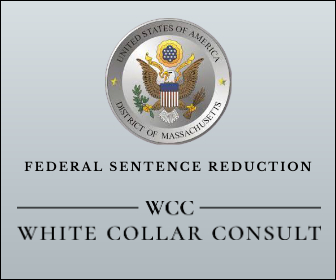If you have pleaded guilty to a Federal crime you will most likely be subject to the Federal Sentencing Guidelines. This is the sentencing range that you may be facing. They are advisory and not mandatory, meaning the judge may go up or down on his length of sentence. The guidelines will be calculated by among other things, type of crime, criminal history, the way the crime was committed, how many people were involved, and how many additional charges you may be facing. If it’s a white-collar or drug crime, the amount of money or drugs can determine the length of the guidelines. So if I have plead guilty to these types of crimes, what would I have to do to get a sentence lower than what the guidelines recommend?
Here are some of the things my clients have done that have earned them departures from the guidelines:
Cooperation
There may be nothing more valuable than cooperating with the government in either the crime you are charged with or assisting in new investigations. Cooperation is king. If your cooperation is effective and you follow certain guidelines that are outlined in your plea agreement you may receive what is called a 5K1 letter. This is a letter written on your behalf to the judge outlining what your cooperation was and in some cases asking the judge to depart or go lower than what the guidelines recommend. This letter is submitted prior to sentencing. If you have some additional cooperation to offer after you have been sentenced the government may file what is called rule 35, which could give you another opportunity for a departure after sentencing.
Restitution
In some cases, a judge may depart from the guidelines when a person makes an effort to pay a portion or all of their restitution prior to sentencing. Not only is this something the judge may see as necessary to make the victims whole, but it may also give the judge an indication that the person is ready to make amends and change his behavior.
Sentencing Narrative
This is a piece of work created by the defendant that will be submitted to the judge and the probation officer to assist them in knowing the defendant better, their upbringing, factors that lead to the crime, and substance abuse history if any. In addition, the defendant has an opportunity to explain what type of remorse and perspective he has gained as a result of his behavior. Finally, the defendant has an opportunity to discuss his action plan for pre and post-sentencing. When he submits his action plan, at sentencing the attorney can match what the defendant committed to achieving in his narrative with what he has done to change his behavior in the sentencing memorandum. By doing this the judge can see the defendant has followed through on his plan of recreating his life.
Character Reference Letters
These are going to be letters that are written by a person who knows the defendant well and for a long period of time. It is not beneficial to send 40-50 letters to a judge from people who don’t know the defendant well. The judge wants to know how long has the person known the defendant, how do they know him, and what can they tell the judge about his attitude towards the crime. Remorse and introspection are the key elements the judge will be looking for.
These are not guarantees that you will get a lower sentence or th at your judge will depart from the guidelines, however putting in a substantial amount of work post-conviction can change the outcome of a sentence. The goal here is to get the prosecutor, probation officer, and judge to view you as who you are aside from your crimes and bring that view into their decision-making process.
at your judge will depart from the guidelines, however putting in a substantial amount of work post-conviction can change the outcome of a sentence. The goal here is to get the prosecutor, probation officer, and judge to view you as who you are aside from your crimes and bring that view into their decision-making process.


